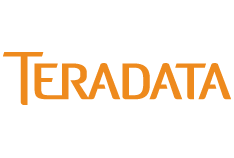
Teradata Rakes In New Retail Wins
From heavy-duty adhesives to pneumatic power tools, to just about any other brawny-tool-of-trade imaginable in between—W.W. Grainger is one of only a few Fortune 500 outfits that focuses on delivering a wide range of industrial maintenance products to the world marketplace. The company turned in a $7.2 billion profit report card in 2010 and continues to expand in terms of products and new markets.
 This growth in business means a growth in new data sources and requirements. Accordingly, this week the company announced that it was taking advantage of Teradata’s Active Enterprise Data Warehouse platform and its Value Analyzer software to manage complexity.
This growth in business means a growth in new data sources and requirements. Accordingly, this week the company announced that it was taking advantage of Teradata’s Active Enterprise Data Warehouse platform and its Value Analyzer software to manage complexity.
According to Kristin Norrise who serves as VP of finance within Grainger’s US operations, their implementation of Teradata’s solutions allowed her team to “become more efficient in capturing data needed to effectively run our business.”
As she noted in a statement today, “We’re able to analyze data on a variety of dimensions at the level of detail and speed our business users need for strategic decision-making necessary to achieve our goals.”
The Active Enterprise Data Warehouse platform is purpose built to run on the Teradata Database and allows users to expand incrementally from 1 Terabyte to 4 Petabytes. The company points to six features that define the offering, including:
Access – Front-line users access the data warehouse for operational decision making with a service level agreement of five seconds or less (also known as “web speed”).
Load – Near-real-time data enter the data warehouse via mini-batch loading, replication services or continuous streams of data from message queuing systems.
Events — Event-driven architectures and business activity monitoring detect significant business events and issue alerts for timely, informed decisions.
Workload Management — Dynamic priority management inside the data warehouse ensures service levels are achieved across multiple user communities and workload types.
Integration — Integration tools and designs connect the data warehouse to web sites, portals, SOA, web services, enterprise service busses, workflow and batch systems.
Availability — Policies, procedures and redundant hardware ensure the entire information supply chain is protected when subsystem failure occurs.
Teradata has been on the radar in the last year with other notable large retail use cases, including their acquisition of primo customer, Target. In January, Teradata discussed how the mega-retailer was making use of the Teradata Active Warehouse (ADW) offering. The retailer said they selected Teradata’s ADW to enable management of complex user queries on large data volumes in a mixed workload environment across the entire business—no small task.
On that note, the company had a strong showing in the overall retail sector last week, coming in at the top of Consumer Goods Magazine’s list for business intelligence and demand data intelligence solutions—a ranking based on the feedback from industry executives.






























